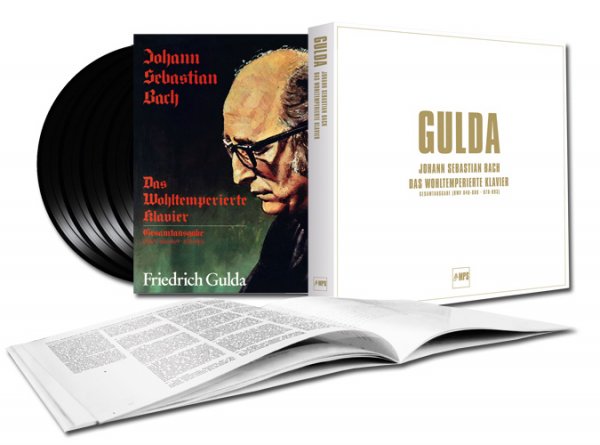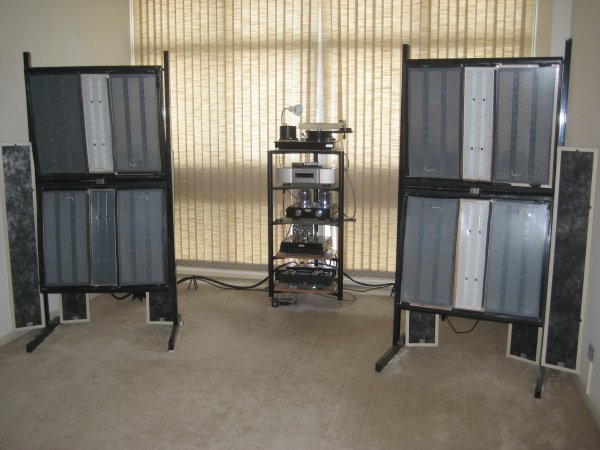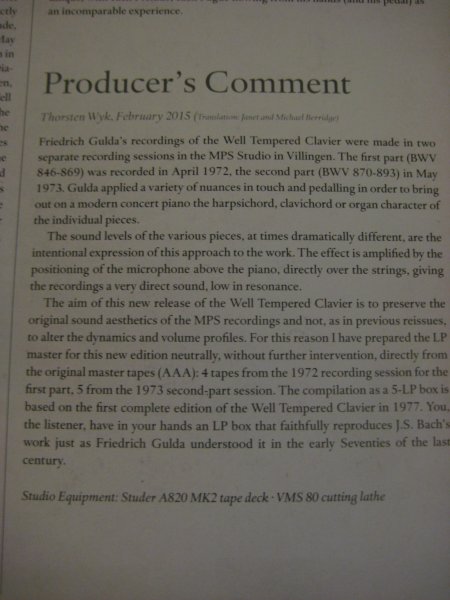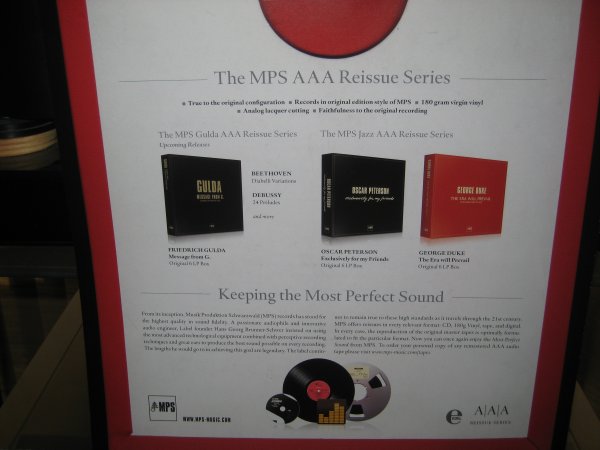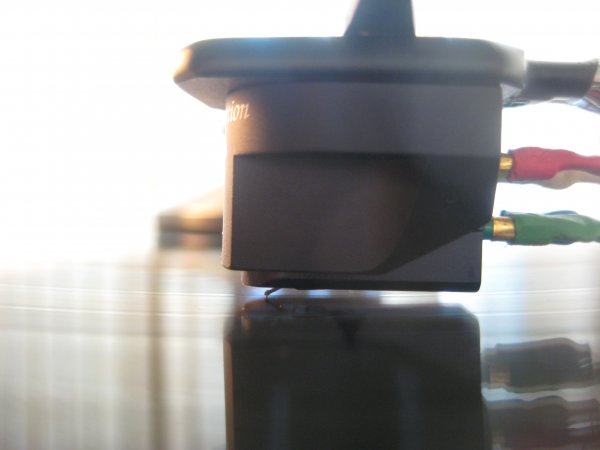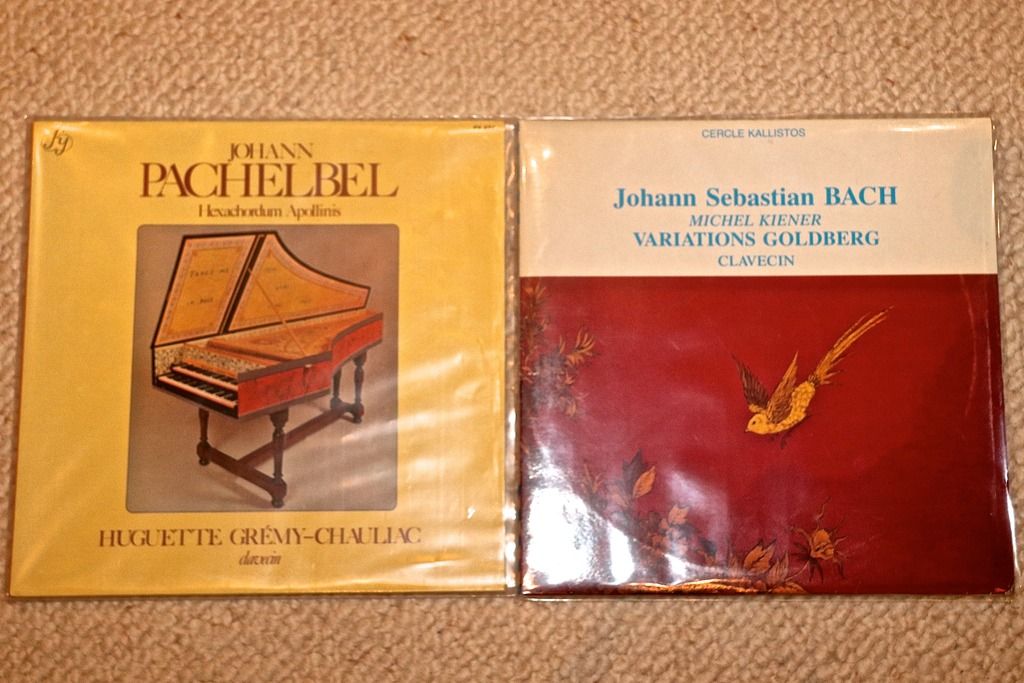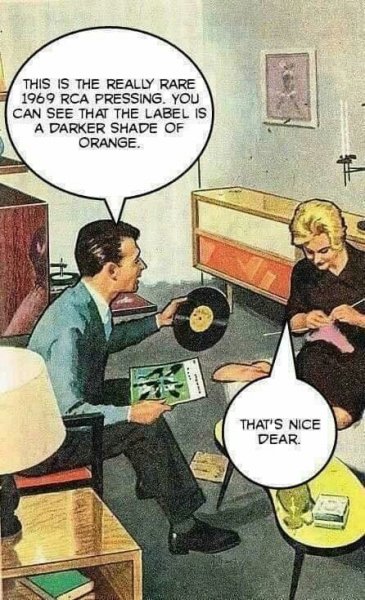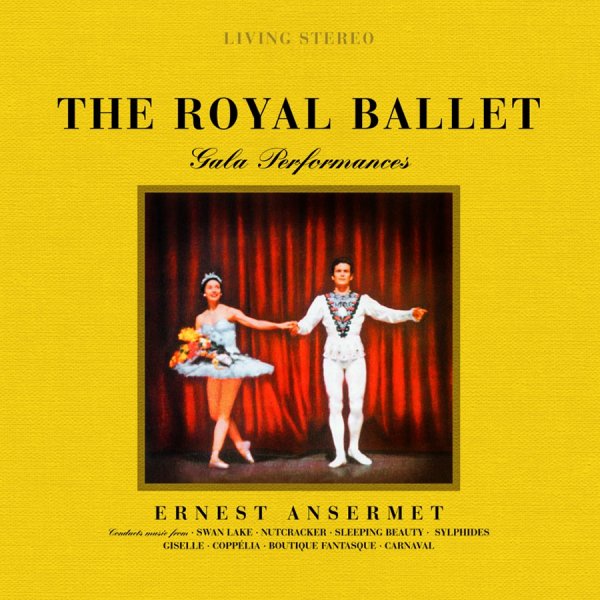What are you currently listening to (Classical)?
- Thread starter Bachtoven
- Start date
You are using an out of date browser. It may not display this or other websites correctly.
You should upgrade or use an alternative browser.
You should upgrade or use an alternative browser.
tonight a daily double... Mozart on Turnabout (Vox)...and Schumann on DGG.
And is it just me?...or does just about every Classical Turnabout (Vox) LP have strong, clean SQ...
Case in point: on Turnabout (Vox) , the Mozart: Haffner Serenade, K.250 ( beyond ...way beyond ...brilliant IMHO) sounded so solid that I half-expected Susanne Lautenbacher's violin to pop up through the turntable!
just saying...
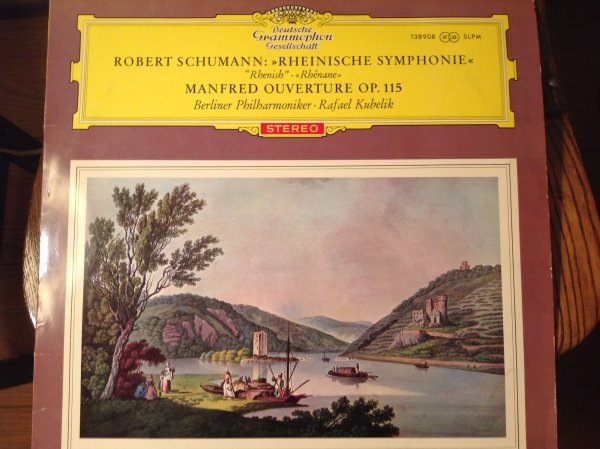
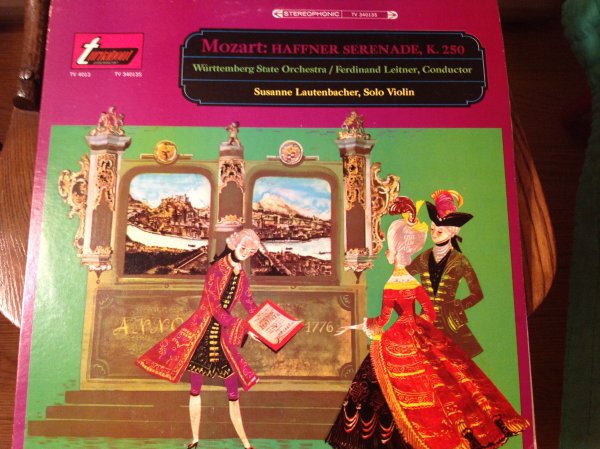
And is it just me?...or does just about every Classical Turnabout (Vox) LP have strong, clean SQ...
Case in point: on Turnabout (Vox) , the Mozart: Haffner Serenade, K.250 ( beyond ...way beyond ...brilliant IMHO) sounded so solid that I half-expected Susanne Lautenbacher's violin to pop up through the turntable!
just saying...


Magnus Lindberg, "Concerto for Orchestra".
Quickly moving up as one of my favorite contemporary composers.
[youtube]

Quickly moving up as one of my favorite contemporary composers.
[youtube]

Magnus Lindberg, "Concerto for Orchestra".
Quickly moving up as one of my favorite contemporary composers.
Yes, Lindberg is great. I have the 4-CD set with his orchestral works that contains the Concerto for Orchestra as well.
meistersinger57
Well-Known Member
180 Gram 5LP Box Set! Analogue Remastering (AAA)!
Analog lacquer cutting directly from the Original Master Tapes!
In Friedrich Gulda’s recording of The Well-Tempered Clavier two significant events in the history of Western music meet. One of these is this exceptional recording. It originates in the years of 1972/73, the high and endpoint of the collaboration between the Austrian pianist and the sound-sorcerer from Villingen, Germany, Hans Georg Brunner-Schwer. Since 1969, Gulda had been using the Black Forest studio’s state-of-the art technical capabilities for the recording of the music cycles of Beethoven, Debussy, and Mozart, as well as his own work. A Steinway Grand Imperial was hauled into the MPS studio especially for Gulda’s use. You can still see the marks left from where the instrument had been precisely placed to the millimeter so that the piano’s sonority could be optimally captured. All of this is what makes Gulda’s interpretations so bold and meaningful to this day. The optimal microphone placements on the piano strings reduces the distance between Bach’s work and the audience, allowing the listener to physically experience the music. The Steinway sounds out in full stereo; its extreme dynamics creates a wide emotional spectrum, ranging from delicate intimacy to unbridled extroversion. The other epic event is the work itself: although it may be taken for granted today, Johann Sebastian Bach created a cycle of works played through all 24 major and minor keys that, with its development of equally tempered tuning, was a quantum spring forward. At the same time, Bach underlined the cosmic dimension of his creation by intentionally leaving open the choice of which “clavier” the piece should be played on (at that time, Clavichord, Cembalo and organ). Independent of the mechanics, this underscores the divine substance of his music. Gulda died in 2000.
This 5lP Box Set release of the Gulda recordings celebrates the anniversary of the pianist’s 85th birthday. It especially takes into account the encounter between two geniuses; this is a direct copy from the master tape, the first time since the seventies that the true tonal color of the original has been produced, without any “corrections” of the dynamics. In this edition of 5 LP box set, the listener finds the original accompanying material, with labels, booklets, and Gulda’s comments, as well as new texts from Gulda confidant Thomas Knapp and the current sound engineer Thorsten Wyk. Finally, the listener can once again experience Gulda’s Bach the way Gulda had conceived it – as eruptive as that timeless meeting of spirit and emotion over 250 years ago.
Features:
• True to the original configuration
• Records in original edition style of MPS
• Adaptation of the original LP box
• Including the original LP booklet
• Vinyl labels modeled from the originals
• 180 gram Virgin Vinyl
• Analog lacquer cutting directly from the Original Master Tapes
• Faithfulness to the original recording
• 12" x 12" 20-Page Booklet
• Analogue Remastering (AAA)!
Selections:
Johann Sebastian Bach (1685-1750)
Das Wohltemperierte Klavier (The Well Tempered Clavier)
Preludes and Fugues (Gesamtausgabe BMV 846-869, 870-893)
"An important aspect of these recording sessions is that the microphone was positioned above the piano, “directly over the strings, giving the recordings a very direct sound, low in resonance.” There is indeed no relaxing bath of acoustic bloom in this recording, and as a result the playing can at times sound almost confrontational. One of Gulda’s interpretative ideas was to “bring out on a modern concert piano the harpsichord, clavichord or organ character of the individual pieces.” Trying to identify which might be which is a game you can play with yourself or friends, but there is no handy listing guide so arguments may remain inconclusive. In any case, Gulda is happy at times to soften the sound using the una corda pedal, which approaches the gentler clavichord. A staccato touch can suggest harpsichord, with at times quite a French feel. Dynamic differences between pieces can be considerable, so we’re kept awake or, if driving, twiddling the volume knob. The piano sound is bright – just short of being ‘hard’, but while this is not the usual perspective it is one to which you can easily become accustomed.
Gulda’s technique is very much the strength of this Bach, by which I mean we’re usually as aware of Gulda as we are of Bach at every turn. This is not necessarily a bad thing, but I suspect you will have to like Gulda to have this recording at the top of your pile of favourites. I was always a bit wary of him after not particularly enjoying some of his Mozart and various later programming mashups, but had my mind changed on discovering his remarkable 1960s Beethoven sonatas. Bach’s Well-Tempered Clavier is different terrain but in many ways equally mountainous. Once you have become acquainted with the range and depth of this recording you soon appreciate its qualities and foibles, as it is in many ways as distinctive as Glenn Gould’s version, though without the latter’s occasionally frustrating willfulness. Both are brilliant, but both can be an acquired taste.
Both Gulda’s rhythmic acuity and ability to nuance voices are clear throughout, and he doesn’t ‘ham-up’ Bach in any way, other than in throwing in some strangely unidiomatic but quirkily forgivable ornaments here and there. There is some sublimely soft and expressive playing to go along with the propulsive and energetic, lyricism to contrast with the spiky or percussive. Take the change between the percussively driving fugue of BWV 856 and the sweetly lyrical and flowing prelude of BWV 857 and consider the difference between those two worlds. This recording is filled with such wide contrasts, and this is a quality which makes it stand out even four and a half decades later.
As with many piano performances, tempi can at times slow down to the ruminative, such as the prelude of BWV 853. I rather like these pensive qualities and find myself dreaming along with the performer, lost in timelessness. Less appealing is the more clattering glare of BWV 861 which I presume is a more ‘organ’ tinted performance, at least judging on the use of the pedal. In other words, you have to take the rough with the smooth – admittedly a subjective conclusion since what I find aversive may be an exciting treat for others. There are indeed some exciting moments to be had as well, for instance the prelude of BWV 864 which comes in at a bracing 50 seconds. There is a slight difference between Book I and Book II in terms of recording quality" ( http://www.musicweb-international.com/classrev/2016/Jan/Bach_WTC_0300650MSW.htm
I much prefer the quality of BOOK ONE recording. ( IMO).
System: stacked pairs of Quads ESL 57's[ Wayne Picquets refurbished panels] & Townshend SuperTweeters + SUPRATEK CORTESE FULL PREAMP and CROFT "Hybrid" Amplifier: very good results with classical music and jazz ...
Analog lacquer cutting directly from the Original Master Tapes!
In Friedrich Gulda’s recording of The Well-Tempered Clavier two significant events in the history of Western music meet. One of these is this exceptional recording. It originates in the years of 1972/73, the high and endpoint of the collaboration between the Austrian pianist and the sound-sorcerer from Villingen, Germany, Hans Georg Brunner-Schwer. Since 1969, Gulda had been using the Black Forest studio’s state-of-the art technical capabilities for the recording of the music cycles of Beethoven, Debussy, and Mozart, as well as his own work. A Steinway Grand Imperial was hauled into the MPS studio especially for Gulda’s use. You can still see the marks left from where the instrument had been precisely placed to the millimeter so that the piano’s sonority could be optimally captured. All of this is what makes Gulda’s interpretations so bold and meaningful to this day. The optimal microphone placements on the piano strings reduces the distance between Bach’s work and the audience, allowing the listener to physically experience the music. The Steinway sounds out in full stereo; its extreme dynamics creates a wide emotional spectrum, ranging from delicate intimacy to unbridled extroversion. The other epic event is the work itself: although it may be taken for granted today, Johann Sebastian Bach created a cycle of works played through all 24 major and minor keys that, with its development of equally tempered tuning, was a quantum spring forward. At the same time, Bach underlined the cosmic dimension of his creation by intentionally leaving open the choice of which “clavier” the piece should be played on (at that time, Clavichord, Cembalo and organ). Independent of the mechanics, this underscores the divine substance of his music. Gulda died in 2000.
This 5lP Box Set release of the Gulda recordings celebrates the anniversary of the pianist’s 85th birthday. It especially takes into account the encounter between two geniuses; this is a direct copy from the master tape, the first time since the seventies that the true tonal color of the original has been produced, without any “corrections” of the dynamics. In this edition of 5 LP box set, the listener finds the original accompanying material, with labels, booklets, and Gulda’s comments, as well as new texts from Gulda confidant Thomas Knapp and the current sound engineer Thorsten Wyk. Finally, the listener can once again experience Gulda’s Bach the way Gulda had conceived it – as eruptive as that timeless meeting of spirit and emotion over 250 years ago.
Features:
• True to the original configuration
• Records in original edition style of MPS
• Adaptation of the original LP box
• Including the original LP booklet
• Vinyl labels modeled from the originals
• 180 gram Virgin Vinyl
• Analog lacquer cutting directly from the Original Master Tapes
• Faithfulness to the original recording
• 12" x 12" 20-Page Booklet
• Analogue Remastering (AAA)!
Selections:
Johann Sebastian Bach (1685-1750)
Das Wohltemperierte Klavier (The Well Tempered Clavier)
Preludes and Fugues (Gesamtausgabe BMV 846-869, 870-893)
"An important aspect of these recording sessions is that the microphone was positioned above the piano, “directly over the strings, giving the recordings a very direct sound, low in resonance.” There is indeed no relaxing bath of acoustic bloom in this recording, and as a result the playing can at times sound almost confrontational. One of Gulda’s interpretative ideas was to “bring out on a modern concert piano the harpsichord, clavichord or organ character of the individual pieces.” Trying to identify which might be which is a game you can play with yourself or friends, but there is no handy listing guide so arguments may remain inconclusive. In any case, Gulda is happy at times to soften the sound using the una corda pedal, which approaches the gentler clavichord. A staccato touch can suggest harpsichord, with at times quite a French feel. Dynamic differences between pieces can be considerable, so we’re kept awake or, if driving, twiddling the volume knob. The piano sound is bright – just short of being ‘hard’, but while this is not the usual perspective it is one to which you can easily become accustomed.
Gulda’s technique is very much the strength of this Bach, by which I mean we’re usually as aware of Gulda as we are of Bach at every turn. This is not necessarily a bad thing, but I suspect you will have to like Gulda to have this recording at the top of your pile of favourites. I was always a bit wary of him after not particularly enjoying some of his Mozart and various later programming mashups, but had my mind changed on discovering his remarkable 1960s Beethoven sonatas. Bach’s Well-Tempered Clavier is different terrain but in many ways equally mountainous. Once you have become acquainted with the range and depth of this recording you soon appreciate its qualities and foibles, as it is in many ways as distinctive as Glenn Gould’s version, though without the latter’s occasionally frustrating willfulness. Both are brilliant, but both can be an acquired taste.
Both Gulda’s rhythmic acuity and ability to nuance voices are clear throughout, and he doesn’t ‘ham-up’ Bach in any way, other than in throwing in some strangely unidiomatic but quirkily forgivable ornaments here and there. There is some sublimely soft and expressive playing to go along with the propulsive and energetic, lyricism to contrast with the spiky or percussive. Take the change between the percussively driving fugue of BWV 856 and the sweetly lyrical and flowing prelude of BWV 857 and consider the difference between those two worlds. This recording is filled with such wide contrasts, and this is a quality which makes it stand out even four and a half decades later.
As with many piano performances, tempi can at times slow down to the ruminative, such as the prelude of BWV 853. I rather like these pensive qualities and find myself dreaming along with the performer, lost in timelessness. Less appealing is the more clattering glare of BWV 861 which I presume is a more ‘organ’ tinted performance, at least judging on the use of the pedal. In other words, you have to take the rough with the smooth – admittedly a subjective conclusion since what I find aversive may be an exciting treat for others. There are indeed some exciting moments to be had as well, for instance the prelude of BWV 864 which comes in at a bracing 50 seconds. There is a slight difference between Book I and Book II in terms of recording quality" ( http://www.musicweb-international.com/classrev/2016/Jan/Bach_WTC_0300650MSW.htm
I much prefer the quality of BOOK ONE recording. ( IMO).
System: stacked pairs of Quads ESL 57's[ Wayne Picquets refurbished panels] & Townshend SuperTweeters + SUPRATEK CORTESE FULL PREAMP and CROFT "Hybrid" Amplifier: very good results with classical music and jazz ...
Attachments
Last edited:
(...)
• Analog lacquer cutting directly from the Original Master Tapes
• Analogue Remastering (AAA)!
(...)
It looks to be a very interesting recording. What means "directly cut" from the original master tapes, considering it was subjected to analog remastering? Do you have more technical details in the booklet?
meistersinger57
Well-Known Member
It looks to be a very interesting recording. What means "directly cut" from the original master tapes, considering it was subjected to analog remastering? Do you have more technical details in the booklet?
Thank you for your thoughtful comment. As for the information in the booklet (photo included) there would have been no remastering of the original tapes. The information "ipsis literis": "The aim of this new release of the Well Tempered Clavier is to preserve the ORIGINAL SOUND AESTHETICS OF THE MPS RECORDING AND NOT, AS IN PREVIOUS REISSUES, TO ALTER THE DYNAMICS AND VOLUME PROFILES. for this reason, I HAVE PREPARED THE LP MASTER FOR THIS NEW EDITION NEUTRALLY, WITHOUT FURTHER INTERVENTION, DIRECTLY FROM THE ORIGINAL MASTER TAPES (AAA): 4 TAPES FROM THE 1972 RECORDING SESSION FOR THE FIRST PART, 5 FROM THE 1973 SECOND-PART EDITION. YOU, THE LISTENER , HAVE IN YOUR HANDS AN LP BOX THAT FAITHFULLY REPRODUCES JSBACH'S WORK JUST AS FRIEDRICH GULDA UNDERSTOOD IT IN THE EARLY SEVENTIES OF THE LAST CENTURY. " (...) SO, FOR ME, "WITHOUT FURTHER INTERVENTION" MEANS NO REMASTERIZATION AT ALL ...
I agree with above comment;" A totally diiferent approach compared to Gould" (dcc) ; nevertheless equally commendable... Here too, BOOk one sounds "better" than BOOK Two ( H.G. Brunner): more "body" and less "dryness"... * Stacked ESL"s 57 highly "revealing"... Transf. Proteus SRA at "almost" 91 degrees...
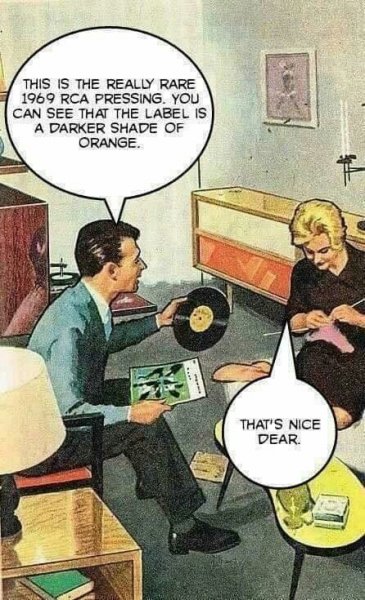 (...)
(...)Attachments
Last edited:
Tidal...
Very good quality recording. And it's always time well spent listening to the great works of J.S. Bach.

Very good quality recording. And it's always time well spent listening to the great works of J.S. Bach.

meistersinger57
Well-Known Member
Congratulations for your "Goldberg" Bach recording (MICHEL KIENER). certainly as a conscious collector you knows the importance of this LP ( see review). I have for some time been after a good copy, but really these are elusive and somehow expensive for a poor retired old man...
Unlike other recordings of Bach's masterpiece, Cercle didn't attempt to squeeze all of the music on just one record, but the overall results are so phenomenal, they had to have used some other "tricks", which are: There were just two microphones; YBA recording equipment and they used no Dolby or any other form of manipulation or compression. This was a truly "minimalist" execution.
The sonics are like a top notch direct-to-disc, being super clean, very immediate and dynamic. The sound is focused and it doesn't change at different volumes or when the music becomes complex. The sound-floor is extremely low. This LP is the closest that I've heard to a real harpsichord in your own listening room. It might even be better than the two incredible Japanese RCA direct-to-disc piano records.
I realize this is a very rare album, but I have no choice, this set must be recognized for what it is, and it is definitely worth the effort and expense to find a copy, especially if the music is appealing. I've never seen one listed used.
ALTERNATIVES: There is another recording of the Goldberg Variations, on just 1 LP, that still sounds superb. It is Deutsche Harmonia Mundi 1C 065-99 710. The artist is Gustav Leonhardt, who may be the most acclaimed Harpsichord player in the last 40 years. This record should be much easier to find, but the sonics are not in the league of the Kiener. Reference Recordings also came out with a harpsichord record with music this time by the French composer, Rameau (RR-27). It is very good, but no where close to the Cercle.
Source :http://www.high-endaudio.com/SR-DIVINITY.html
***********FINEST SOLO HARPSICHORD LP***********
BACH-GOLDBERG VARIATIONS-MICHEL KIENER-CERCLE KALLISTOS CK 1004
"The harpsichord is a very difficult instrument to record, and further, the recorded sound of the instrument has regularly gotten on my nerves when I have listened to it on its own. This LP proves that some of that sonic irritation has been caused by the recordings themselves. I was not even aware of this particular record label until I auditioned this 2 LP album.BACH-GOLDBERG VARIATIONS-MICHEL KIENER-CERCLE KALLISTOS CK 1004
Unlike other recordings of Bach's masterpiece, Cercle didn't attempt to squeeze all of the music on just one record, but the overall results are so phenomenal, they had to have used some other "tricks", which are: There were just two microphones; YBA recording equipment and they used no Dolby or any other form of manipulation or compression. This was a truly "minimalist" execution.
The sonics are like a top notch direct-to-disc, being super clean, very immediate and dynamic. The sound is focused and it doesn't change at different volumes or when the music becomes complex. The sound-floor is extremely low. This LP is the closest that I've heard to a real harpsichord in your own listening room. It might even be better than the two incredible Japanese RCA direct-to-disc piano records.
I realize this is a very rare album, but I have no choice, this set must be recognized for what it is, and it is definitely worth the effort and expense to find a copy, especially if the music is appealing. I've never seen one listed used.
ALTERNATIVES: There is another recording of the Goldberg Variations, on just 1 LP, that still sounds superb. It is Deutsche Harmonia Mundi 1C 065-99 710. The artist is Gustav Leonhardt, who may be the most acclaimed Harpsichord player in the last 40 years. This record should be much easier to find, but the sonics are not in the league of the Kiener. Reference Recordings also came out with a harpsichord record with music this time by the French composer, Rameau (RR-27). It is very good, but no where close to the Cercle.
Source :http://www.high-endaudio.com/SR-DIVINITY.html
Attachments
Congratulations for your "Goldberg" Bach recording (MICHEL KIENER). certainly as a conscious collector you knows the importance of this LP ( see review). I have for some time been after a good copy, but really these are elusive and somehow expensive for a poor retired old man...
Thank you. It is indeed a gem.
meistersinger57
Well-Known Member
Audiophilia Online Magazine wrote: "This is the stuff of which dreams are made. The Royal Ballet Gala is one of the finest RCAs recorded in London's Kingsway Hall. The chunks of great ballet music are well served by orchestra, conductor and engineer. Performances are executed to a very high standard - the Royal Opera House Orchestra, both then and now, rank as one of the finest of opera orchestras.
"Conductor Ansermet keeps the pace moving, giving the listener the impression of a dance event rather than a dramatic concert hall reading. With the exception of some of the Tchaikovsky scenes, the music is light and remains so under Ansermet's gentle touch. Each ballet is given full attention by the players, something not always attained at Covent Garden during long ballet nights! The threat of eternity does have it's merits. The recorded sound is simply amazing! Lustrous is one word that comes to mind, accurate is another.
"Tonally, Messrs. Williamson and Wilkinson have used their considerable talents to capture the orchestra superbly. Woodwind and strings glow and resonate, transporting this listener to a time when simpler recording was better. Brass ring out thrillingly and percussion effects are very musical. Be it a bang, swish, rattle, crack or snap, each percussionist is situated perfectly within the beautiful Kingsway soundstage. Even the difficult-to-record sound of the celeste is captured in it's purely mechanical form. It's delicate sound is heard to great effect during the Nutcracker - originating stage left, the sound decays across the stage of Kingsway with sparkling beauty. Wonderful."
=================================================================
The sound is exceptional in every way, and particularly outstanding in outer detail and dynamic qualities. The sound is also BIG, and the instruments actually seem as large as they are in real life.
The only problem that keeps this set from the very top is a noticeable hiss and veil that both obscures some low-level detail and removes the elusive "alive" quality that only the very finest LP's possess. It is similar to the problem the Mercury-Ravel had. However, the "hiss" is only obtrusive on Side One for some reason. The other 3 sides are quieter, and still retain the desirable qualities.
This is an indispensable album, even for those who normally shy away from "Classical Music", but it is no longer available new. There is also a 45 RPM version on 8 LPs, which I haven't heard. It should sound even better, but there is nothing they can do with the hiss.
A rare, original pressing of this album was going for $ 1,000 at one time. This reissue will almost undoubtedly sound much better, with the extra advantages of being considerably cheaper and brand new. Finally, there is even a beautiful booklet inside with color illustrations and descriptions of the ballets.
=============================================================
From Analog Planet website:
https://www.analogplanet.com/content/royal-ballet-re-pressed-and-immediately-sells-out
"Originally licensed in 1959 from British Decca and issued by RCA Victor in America on its lavish Soria series as LDS-6065, the "Gala Performances" performed by The Royal Opera House Orchestra, Covent Gardens conducted by Ernest Ansermet continues to draw new enthusiasts to what many consider one of legendary engineer Kenneth Wilkinson’s most spectacular recordings.
Original pressings of the two LP boxed set in good condition regularly go for around $1000. In the 1990s Classic Records reissued this as a double LP in a gatefold jacket with booklet and as a multi-LP 45rpm single-sided box set, first on 180 gram vinyl and later on 200 gram vinyl. Classic also issued in a very limited edition a slipcase replica of the original."
Read more at https://www.analogplanet.com/conten...and-immediately-sells-out#4hToYVW4SByLgRTB.99
"Conductor Ansermet keeps the pace moving, giving the listener the impression of a dance event rather than a dramatic concert hall reading. With the exception of some of the Tchaikovsky scenes, the music is light and remains so under Ansermet's gentle touch. Each ballet is given full attention by the players, something not always attained at Covent Garden during long ballet nights! The threat of eternity does have it's merits. The recorded sound is simply amazing! Lustrous is one word that comes to mind, accurate is another.
"Tonally, Messrs. Williamson and Wilkinson have used their considerable talents to capture the orchestra superbly. Woodwind and strings glow and resonate, transporting this listener to a time when simpler recording was better. Brass ring out thrillingly and percussion effects are very musical. Be it a bang, swish, rattle, crack or snap, each percussionist is situated perfectly within the beautiful Kingsway soundstage. Even the difficult-to-record sound of the celeste is captured in it's purely mechanical form. It's delicate sound is heard to great effect during the Nutcracker - originating stage left, the sound decays across the stage of Kingsway with sparkling beauty. Wonderful."
=================================================================
THE ROYAL BALLET-ANSERMET- RCA LDS 6065 (CLASSIC REISSUE)
“This is a magnificent (2 LP) album, that should be in every record collection. In effect, it is the "highlights" of all the most famous Romantic ballets, by Tchaikovsky, Delibes etc.
The sound is exceptional in every way, and particularly outstanding in outer detail and dynamic qualities. The sound is also BIG, and the instruments actually seem as large as they are in real life.
The only problem that keeps this set from the very top is a noticeable hiss and veil that both obscures some low-level detail and removes the elusive "alive" quality that only the very finest LP's possess. It is similar to the problem the Mercury-Ravel had. However, the "hiss" is only obtrusive on Side One for some reason. The other 3 sides are quieter, and still retain the desirable qualities.
This is an indispensable album, even for those who normally shy away from "Classical Music", but it is no longer available new. There is also a 45 RPM version on 8 LPs, which I haven't heard. It should sound even better, but there is nothing they can do with the hiss.
A rare, original pressing of this album was going for $ 1,000 at one time. This reissue will almost undoubtedly sound much better, with the extra advantages of being considerably cheaper and brand new. Finally, there is even a beautiful booklet inside with color illustrations and descriptions of the ballets.
=============================================================
From Analog Planet website:
https://www.analogplanet.com/content/royal-ballet-re-pressed-and-immediately-sells-out
"Originally licensed in 1959 from British Decca and issued by RCA Victor in America on its lavish Soria series as LDS-6065, the "Gala Performances" performed by The Royal Opera House Orchestra, Covent Gardens conducted by Ernest Ansermet continues to draw new enthusiasts to what many consider one of legendary engineer Kenneth Wilkinson’s most spectacular recordings.
Original pressings of the two LP boxed set in good condition regularly go for around $1000. In the 1990s Classic Records reissued this as a double LP in a gatefold jacket with booklet and as a multi-LP 45rpm single-sided box set, first on 180 gram vinyl and later on 200 gram vinyl. Classic also issued in a very limited edition a slipcase replica of the original."
Read more at https://www.analogplanet.com/conten...and-immediately-sells-out#4hToYVW4SByLgRTB.99
Attachments
Similar threads
- Replies
- 2
- Views
- 581
- Replies
- 0
- Views
- 195
- Replies
- 3
- Views
- 303
- Replies
- 93
- Views
- 7K
- Replies
- 708
- Views
- 44K
| Steve Williams Site Founder | Site Owner | Administrator | Ron Resnick Site Owner | Administrator | Julian (The Fixer) Website Build | Marketing Managersing |


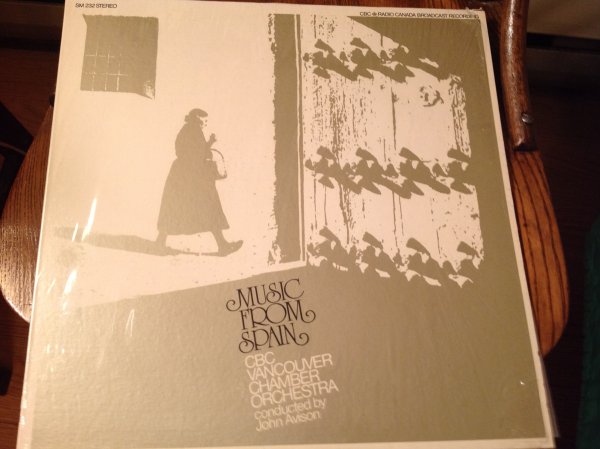
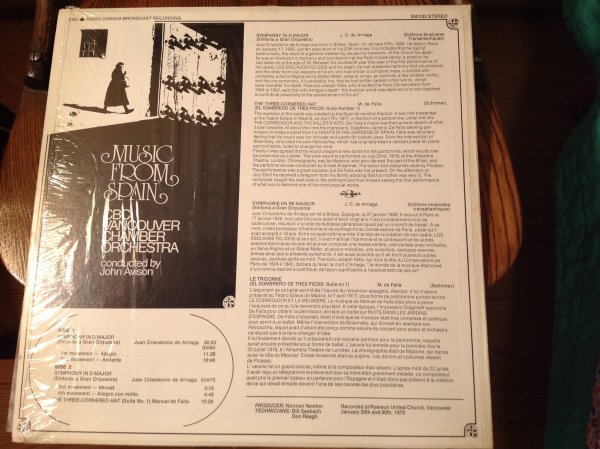

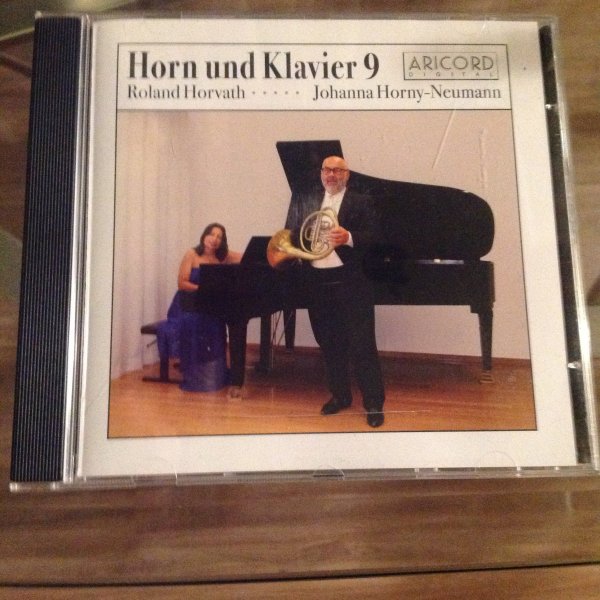
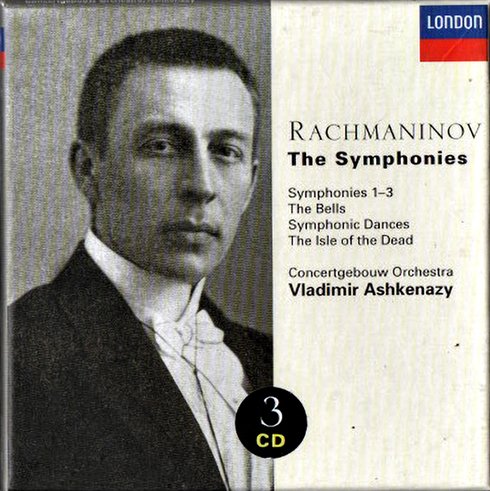
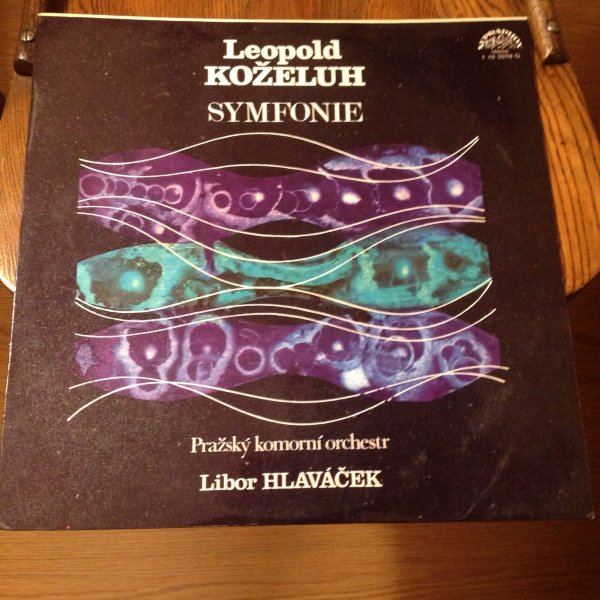
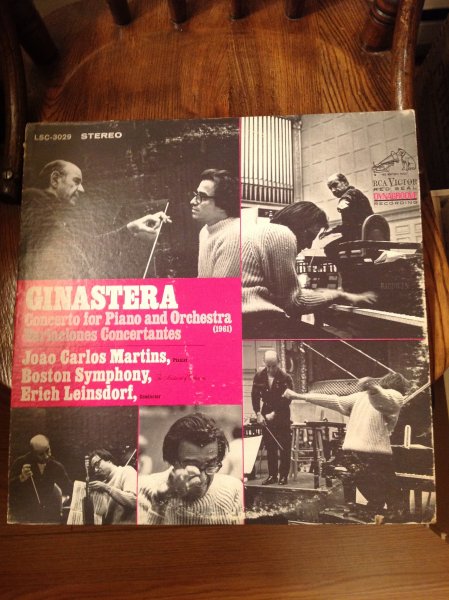


![Gulda-F-B01-2c[MPS-5LP].jpg](/data/attachments/36/36872-2149c7c3146a19005853b7bf46958b03.jpg)
